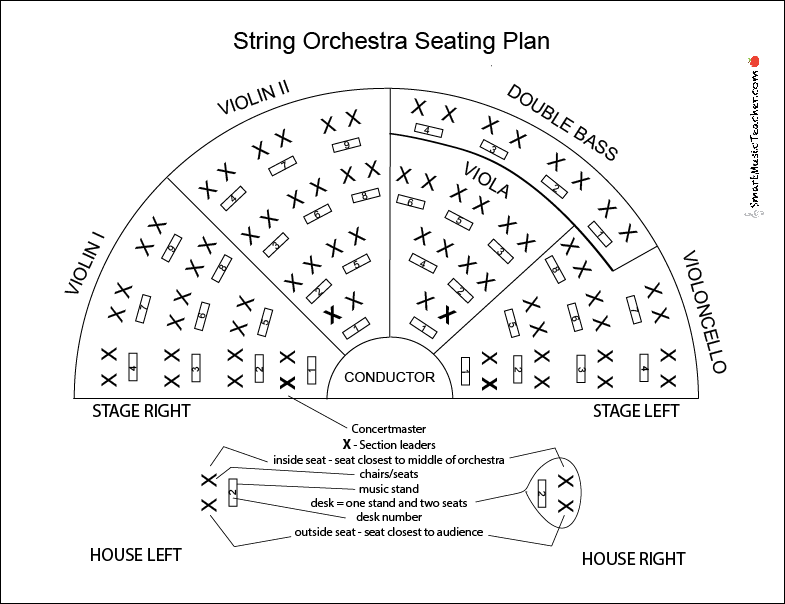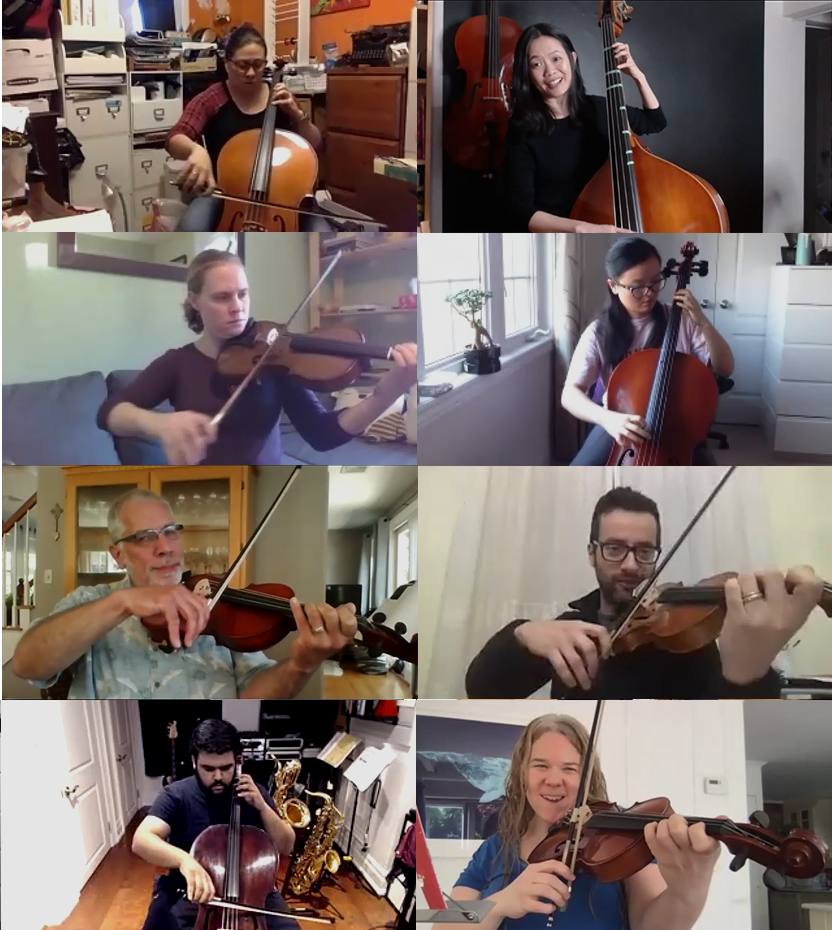The set-up of a string orchestra can be a bit bewildering to beginners. One of the first things I do in September is use this handout with my beginning students to illustrate how a string orchestra is seated. Through this lesson, they quickly become experts at setting up for the classroom or for rehearsals.
This free download includes a handout, a worksheet, and two versions of the test. Students will learn where the sections are, the difference between the inside seat and outside seat, how to count desks no matter the size of the space, and where the section leaders and concertmaster sit.
This lesson is a great segue into the classroom routine at the beginning of the year. Through this lesson, my students learn how I expect them to set up at the beginning of every class. They know where I want them to put extra chairs and stands. As well, the last class of the day also knows that on rehearsal days they need to set up enough chairs for after-school orchestra.
The Lesson Plan
Here is quick outline on how I deliver this lesson to my beginner class:
Day 1 (This is the day I assign the beginners their instruments.)
- Prepare by setting up the classroom the I want it.
- Deliver the content of the handout and do the worksheet, referring to current set up of the classroom. (It may help some students to turn the diagram upside down.)
- Announce what instruments they will be playing by the seating plan I made for them. I go through each section and desk, and tell them the first name at each desk is the outside seat, and the second name is the inside seat.
- They try to find their section and seat.
- I check and point out corrections.
- I post the seating plan for them to refer to the next day.
- They are told they need to set up their section at the beginning of next class. I tell them how many desks I want them to set up for each section.
Day 2
- Chairs and stands are random.
- Each group should set up their section right away. I tell them the number of desks I need them to set up for the class or the day.
- Have some kind of prize for the first group to set up their section perfectly, and be sitting in the correct seat.
Day 3
- Have no chairs or stands out.
- Demonstrate how to easily set up a section starting with the stands. The stands become easy markers for the number of desks and where the chairs go.
- Each group sets up their section from scratch.
- First group to finish gets a prize.
Once everyone is familiar and comfortable with setting up the classroom and where they sit, and I have gotten to know all of their names, the students rotate desks every two days. This gives everyone a chance to be at the front where I can more easily give them attention.
Section Leaders and Concertmaster
Along with this lesson, I may outline my expectations of section leaders and the concertmaster. Some of those duties include:
- making sure everyone in their section has the right bowings, fingerings and other markings
- being a model for bowings, articulations and dynamics
- cuing the group on entries
- suggesting fingerings, bowings, articulations, dynamics
- making suggestions to the section
- leading group sectionals
- administrative duties, such as the signing out of new music
- etc.
What are the classroom set-up routines in your classroom?
Enjoy this very handy lesson! Download it below.
Download Now
Free String Orchestra Seating Plan Lesson - PDF





Jen
I’ve been a string player pretty much my whole life (3rd grade – adulthood). Can you tell me why a string orchestra sets up differently than a band does? Is there a reason behind having only four stands in the front (one for each section)?
Grace Law
Great question! I often get asked this by band teachers teaching strings. I would say there are several reasons the strings sit the way they do:
1. We have section leaders that play an important role, especially when it comes to bowing. That makes it important that they can be seen clearly, so they take the four desks up front.
2. We have to fit the stage in a wedge shape, which means fewer players up front than behind.
3. We share stands and have to sit at angles to each other, and page-turn for each other because we are always non-stop playing, unlike winds who in comparison tend to play more sporadically.
Those are some of the many reasons I can think of.
Hope that helps!